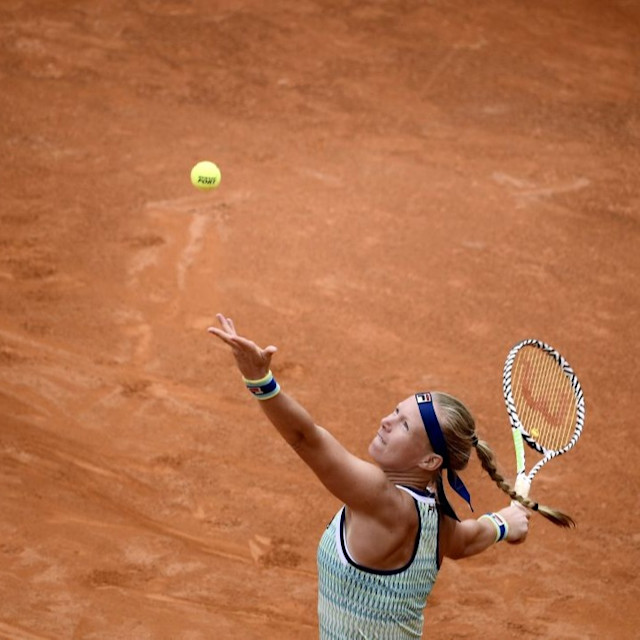The tennis star is preparing for the grass court season.
Coming off a breakout season in 2018, Kiki Bertens made tennis history twice this May: First, she became the only female player to win the Mutua Madrid Open in Spain without dropping a set when she beat No. 3 seed Simona Halep 6-4, 6-4 in the final. That win made her the No. 4 seed, the highest ranking ever held by a Dutch woman.
Along with Halep and Serena Williams, the 27-year-old from Wateringen, the Netherlands, was among the top three favorites to win the French Open, which ends on June 9. But she unexpectedly dropped out in the second round after falling ill, a true disappointment since she considers clay her strong suit.
“I grew up playing on clay, so from a young age I was really used to sliding into the ball and playing longer rallies,” she says, adding that she can force a lot of movement on her opponents and startle them with her high-impact forehand and serve.
By her side during her training sessions is Remko de Rijke, who’s not only her fiancé but also her physiotherapist, fitness coach, and hitting partner. “He makes it more fun to work out,” Bertens says.
Furthermore caught up with her to talk cardio intervals, her go-to match-day hairstyle, and the differences between grass and clay.
The training regimen:
“I spend about two to four hours playing tennis and another two hours in the gym every day, but I always take at least one day of rest per week.
Leading up to the French Open, I did a lot of exercises to make me more agile and prepare my legs for long rallies. I mostly spent my time on the court to get used to the clay after playing on hard surfaces at the Brisbane International tournament and the Australian Open. My coach will usually hit deep shots into the corners so I can practice running and sliding.
Every time I practice, I’ll choose one thing to focus on like my serve or my forehand. Perfecting these elements takes repetition, hitting lots of serves or running for forehand shots anywhere on the court.

Tennis isn’t just about power and speed. It also requires endurance, balance, strength, and coordination. I like to do standing cable rows and bridges for the core, which I think is the most important area since you use it for every move and shot. When the grass season starts over the summer, leg strength is really important because you have to keep your body low when you hit the ball. Fast feet drills with a weighted medicine ball help with that.
For extra cardio off the court, I do treadmill and cycling intervals every other day. Each work period starts out 60 seconds long and gets shorter in 10-second increments before going back up to 60 seconds. I do that backwards ladder for 20 minutes total.”
The nutrition regimen:
“For breakfast, I’ll have oatmeal, fruit, and eggs. I eat a lot of chicken and vegetables, and on heavy training days I’ll get extra carbs from rice. I get fast energy from plain pasta before matches and drink a smoothie with soy milk, fruit, and Orangefit protein afterward.”

The recovery regimen:
“I always stretch and cool down after I train and regularly get massages and manual work done by my physio. Yoga is really important for me, too. It helps my game because it’s good for physical flexibility as well as mental relaxation.”
What’s next?
“I was sad to leave Roland Garros, but I'm trying to stay positive. It's been a great clay season and now it's time to recover and prepare for the Libéma Open. I’m looking forward to playing on grass again.”
This interview has been edited and condensed for publication.
